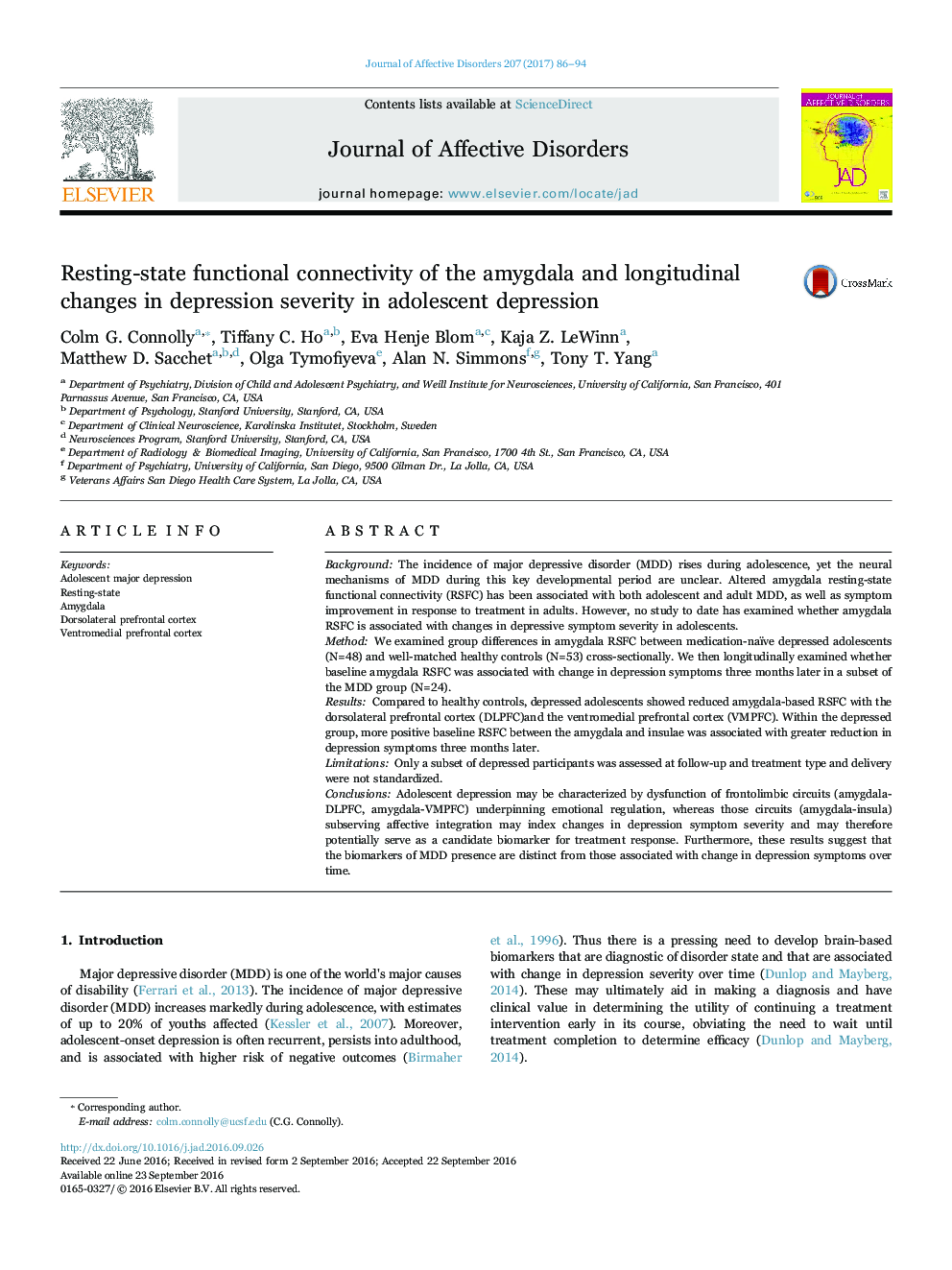| کد مقاله | کد نشریه | سال انتشار | مقاله انگلیسی | نسخه تمام متن |
|---|---|---|---|---|
| 6229474 | 1608118 | 2017 | 9 صفحه PDF | دانلود رایگان |
• At baseline, depressed adolescents exhibited reduced connectivity between amygdala and dorsolateral prefrontal cortex.
• At baseline, depressed adolescents showed reduced amygdala connectivity with ventromedial prefrontal cortex.
• More positive baseline amygdala connectivity with insula was associated with reduced symptom severity three months later.
• Indictors of depression absence/presence are distinct from those associated with change in depression symptoms over time.
BackgroundThe incidence of major depressive disorder (MDD) rises during adolescence, yet the neural mechanisms of MDD during this key developmental period are unclear. Altered amygdala resting-state functional connectivity (RSFC) has been associated with both adolescent and adult MDD, as well as symptom improvement in response to treatment in adults. However, no study to date has examined whether amygdala RSFC is associated with changes in depressive symptom severity in adolescents.MethodWe examined group differences in amygdala RSFC between medication-naïve depressed adolescents (N=48) and well-matched healthy controls (N=53) cross-sectionally. We then longitudinally examined whether baseline amygdala RSFC was associated with change in depression symptoms three months later in a subset of the MDD group (N=24).ResultsCompared to healthy controls, depressed adolescents showed reduced amygdala-based RSFC with the dorsolateral prefrontal cortex (DLPFC)and the ventromedial prefrontal cortex (VMPFC). Within the depressed group, more positive baseline RSFC between the amygdala and insulae was associated with greater reduction in depression symptoms three months later.LimitationsOnly a subset of depressed participants was assessed at follow-up and treatment type and delivery were not standardized.ConclusionsAdolescent depression may be characterized by dysfunction of frontolimbic circuits (amygdala-DLPFC, amygdala-VMPFC) underpinning emotional regulation, whereas those circuits (amygdala-insula) subserving affective integration may index changes in depression symptom severity and may therefore potentially serve as a candidate biomarker for treatment response. Furthermore, these results suggest that the biomarkers of MDD presence are distinct from those associated with change in depression symptoms over time.
Journal: Journal of Affective Disorders - Volume 207, 1 January 2017, Pages 86–94
